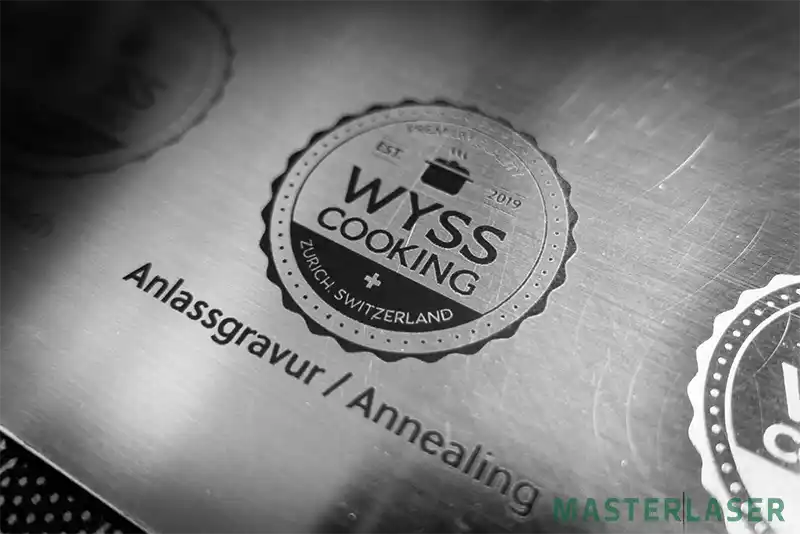The Laser Cutting Industry and the Use of Fiber Marking Technology
The laser cutting industry has revolutionized modern manufacturing and design, providing unparalleled precision, efficiency, and versatility. Among the various technologies driving this transformation, fiber laser marking machines play a pivotal role in enhancing industrial capabilities. In this article, we will explore the laser cutting industry, the role of fiber laser marking technology, and its diverse applications across industries فایبر مارکینگ لیزر حکاکی
Overview of Laser Cutting Technology
Laser cutting involves using a high-powered laser beam to slice or engrave materials with precision. This technology offers numerous advantages over traditional methods, such as minimal material wastage, high-speed operation, and the ability to work with a wide range of materials, including metals, plastics, glass, and even organic materials like wood and leather.
Modern laser cutting systems use different laser types, such as CO2, fiber, and diode lasers, depending on the application. Among these, fiber lasers have gained significant popularity due to their efficiency, durability, and ability to handle intricate tasks like marking and engraving with high detail.
Introduction to Fiber Laser Marking
Fiber laser marking is a specialized application of laser technology used to engrave or mark surfaces permanently. Unlike cutting, marking focuses on creating high-contrast marks without altering the material’s structure. Fiber lasers utilize optical fibers doped with rare-earth elements like ytterbium to generate a concentrated laser beam. This results in high-energy pulses capable of marking a variety of surfaces.
Fiber laser markers are renowned for their precision, speed, and low maintenance requirements. They excel in producing marks that are resistant to wear, corrosion, and high temperatures, making them ideal for industrial and commercial applications.
Applications of Fiber Laser Marking in the Laser Cutting Industry
- Metal Engraving and Cutting
Fiber lasers are particularly effective in working with metals such as steel, aluminum, brass, and titanium. Industries like aerospace, automotive, and electronics rely on fiber laser marking for tasks like engraving serial numbers, barcodes, logos, and other identifiers on components. This ensures traceability and compliance with regulatory standards. - Jewelry Design
Precision is crucial in the jewelry industry, where intricate patterns and detailed markings are common. Fiber laser marking allows jewelers to create personalized engravings, such as names, dates, or logos, on metals like gold, silver, and platinum without damaging the material. - Medical Equipment and Devices
The medical industry demands high precision and durability. Fiber laser marking is used to engrave details like calibration marks, serial numbers, and logos on surgical instruments, implants, and medical devices, ensuring compliance with stringent regulations. - Electronics and Microelectronics
Fiber lasers are widely used in the electronics industry for marking tiny components, such as circuit boards and microchips. Their ability to produce clean, precise, and legible marks ensures quality control and traceability in this high-tech sector. - Automotive Industry
From marking engine parts to engraving dashboards and decorative elements, fiber lasers contribute significantly to automotive manufacturing. They ensure that parts are identifiable, reducing the risk of counterfeit products entering the supply chain. - Packaging and Branding
Fiber laser markers are increasingly used for marking codes, logos, and expiration dates on product packaging. This technology ensures durable and legible markings that enhance brand identity and consumer trust.
Advantages of Fiber Laser Marking in the Laser Cutting Industry
- High Precision and Quality
Fiber laser marking ensures crisp and permanent marks, even on small surfaces or complex geometries. The high resolution is particularly beneficial for industries requiring detailed and accurate labeling. - Versatility
Fiber lasers can mark a variety of materials, including metals, plastics, ceramics, and composites. This versatility makes them indispensable in industries with diverse material requirements. - Cost Efficiency
With minimal maintenance needs and no consumables, fiber laser marking systems offer long-term cost savings. Their energy efficiency also reduces operational expenses. - Eco-Friendliness
Laser marking is a non-contact process that produces minimal waste and does not require chemicals, making it an environmentally friendly solution. - Durability
The marks created by fiber lasers are resistant to wear and fading, ensuring longevity even in harsh environments.
The Future of Fiber Laser Marking in the Industry
As the laser cutting industry evolves, fiber laser marking continues to adapt to new challenges and applications. The integration of automation and artificial intelligence (AI) is set to enhance productivity and precision further. Additionally, advancements in laser technology will likely improve energy efficiency and reduce costs, making fiber laser marking accessible to even more industries.
Conclusion
The laser cutting industry, powered by innovations like fiber laser marking, is reshaping how businesses approach manufacturing and design. With its unmatched precision, durability, and versatility, fiber laser marking is an essential tool for industries ranging from aerospace to consumer goods. As technology advances, the scope of fiber laser marking is poised to expand, driving further innovation and efficiency across industrial landscapes.


